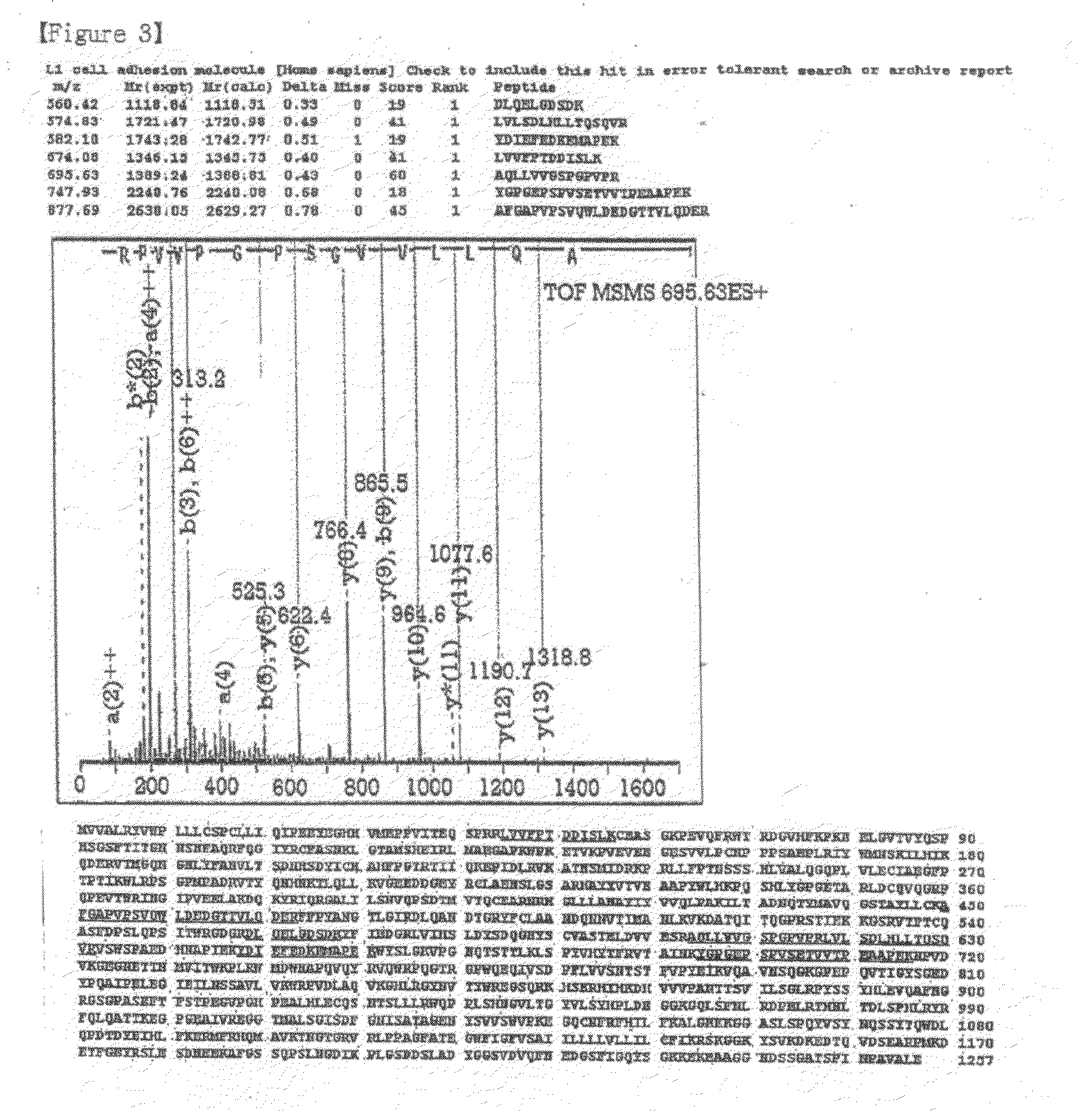Pharmaceutical composition for treating cholangiocarcinoma, a method for inhibiting growth or invasion of cholangiocarcinoma and a method for treating cholangiocarcinoma
a technology of cholangiocarcinoma and pharmaceutical composition, which is applied in the field of pharmaceutical composition, can solve the problems of difficult diagnosis of cholangiocarcinoma, ineffective surgical removal of cholangiocarcinoma, and inconvenient general chemotherapy and radiotherapy
- Summary
- Abstract
- Description
- Claims
- Application Information
AI Technical Summary
Benefits of technology
Problems solved by technology
Method used
Image
Examples
example 1
Culture of Cancer Cells
[0066]Carcinoma cell lines were cultured using the following media, containing 10% fetal bovine serum (FBS; Gibco) in an incubator at 37° C. under 5% CO2. SH-J1 (hepatocellular carcinoma), SCK (cholangiocarcinoma), Choi-CK (cholangiocarcinoma) and ACHN (Renal cell adenocarcinoma) cells were cultured using MEM medium (Gibco), and SK-0V3 (ovary adenocarcinoma) cells were cultured using McCoy 5A Medium (Gibco). A549 (non small cell lung carcinoma) cells were cultured in Ham's F12K medium, and NCI-H522 (non small cell lung carcinoma), DMS114 (small cell lung carcinoma), DMS53 (small cell lung carcinoma) and NCI-H69 (small cell lung carcinoma) cells were cultured in RPMI1640 medium. SH-J1, SCK and Choi-CK cell lines were gifts from Dr. Daegon Kim (Medical School, Chonbuk National University), and other carcinoma cell lines were purchased from ATCC. Normal hepatocytes and HUVEC (human umbilical vein endothelial cells), which all were purchased from Cambrax, were cul...
example 2
Preparation of A10-A3 Monoclonal Antibody Binding to Cancer Cells Choi-CK and SCK
[0067]The cultured Choi-CK and SCK carcinoma cells were detached using cell dissociation buffer (Invitrogen), and 5×105 cells were suspended in 30 μl of PBS. Balb / c mice were injected with Choi-CK cells in the right foot pad, and with SCK cells in the left foot pad 3 days later. Mice were then boosted six times at 3-4 day intervals, and were finally immunized one day before cell fusion. The culture of F0 myeloma cells (ATCC, USA), to be fused with lymph node cells, was commenced in 10% FBS-containing DMEM (Gibco) two weeks before cell fusion. Popliteal lymph nodes were removed from the mice immunized with Choi-CK and SCK cells, washed well with DMEM medium (Gibco) and finely teased. The cell suspension was transferred into a 15-ml tube. F0 myeloma cells were harvested by centrifugation, suspended in 10 ml of DMEM medium, and counted along with the lymph node cells. Then, 106 F0 myeloma cells and 107 lym...
example 3
Evaluation of Cell Surface Expression of L1CAM in Lung Carcinoma Cell Lines
[0072]The hybridoma A10-A3 cell line was cultured in a serum-free medium (PFHM, Invitrogen), and the secreted A10-A3 antibody was purified using a protein G-Sepharose column (Pharmacia, Sweden) (Fike et al., Focus 12: 79, 1990). The purified A10-A3 antibody was evaluated for binding capacity for cholangiocarcinoma cells using fluorescent staining according to the same method as in Example 3 (FIG. 1). In FIG. 1, empty peaks outlined with solid lines represent samples treated with the monoclonal antibodies A10-A3 and 4-63 and the known anti-L1CAM antibodies 5G3 (Pharmingen, San Diego, USA) and UJ127 (Chemicon), while the filled peak is background fluorescence in the presence of the secondary antibody alone. The binding capacity of A10-A3, 4-63, 5G3 and UJ127 antibodies for various carcinoma cells was analyzed using FACS caliber. FACS analysis revealed that the monoclonal antibodies bind to NCI-H522, A549, DMS11...
PUM
| Property | Measurement | Unit |
|---|---|---|
| concentrations | aaaaa | aaaaa |
| concentrations | aaaaa | aaaaa |
| thick | aaaaa | aaaaa |
Abstract
Description
Claims
Application Information
 Login to View More
Login to View More - R&D
- Intellectual Property
- Life Sciences
- Materials
- Tech Scout
- Unparalleled Data Quality
- Higher Quality Content
- 60% Fewer Hallucinations
Browse by: Latest US Patents, China's latest patents, Technical Efficacy Thesaurus, Application Domain, Technology Topic, Popular Technical Reports.
© 2025 PatSnap. All rights reserved.Legal|Privacy policy|Modern Slavery Act Transparency Statement|Sitemap|About US| Contact US: help@patsnap.com



